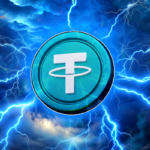Featured News Headlines
Zeus Network: Bridging the Divide Between Bitcoin and Solana
In the fast-paced world of cryptocurrency, where innovation is the only constant, a new project is capturing the attention of investors and developers alike. Zeus Network, a decentralized protocol, is making waves with its ambitious goal: to create a trustless and permissionless bridge between the two giants of the blockchain world, Bitcoin and Solana.
For years, the crypto ecosystem has been fragmented. Different blockchains, each with their unique strengths and weaknesses, have operated in silos. Bitcoin, with its unmatched security and status as a store of value, and Solana, known for its lightning-fast transactions and low fees, have largely remained separate entities. This fragmentation has led to what is known as “liquidity silos,” where the vast capital locked in one blockchain cannot be easily utilized in another. Zeus Network aims to shatter these barriers by forging a new path for cross-chain interoperability.
How It Works: The Zeus Programs
At the heart of Zeus Network’s innovative architecture are what they call “Zeus Programs.” These programs run on the Solana blockchain and are designed to seamlessly integrate with the Bitcoin network. Unlike traditional bridging solutions that often rely on centralized intermediaries or multi-signature wallets, Zeus Network takes a fully decentralized approach. This is a critical distinction, as it eliminates the need for users to trust a third party with their assets, a common vulnerability in the cross-chain space.
By leveraging Solana’s high throughput and low transaction costs, Zeus Programs enable the efficient execution of Bitcoin-related tasks. This means that for the first time, users can access and utilize Bitcoin’s deep liquidity within the Solana ecosystem without compromising the security of their assets. This revolutionary approach not only solves a technical problem but also opens up a world of new possibilities for both ecosystems.
Key Features and Use Cases
Zeus Network’s potential extends far beyond a simple bridge. Here are some of the key features and use cases that make it a game-changer:
- Unlocking Bitcoin Liquidity: Zeus Network allows Bitcoin holders to participate in Solana‘s burgeoning DeFi landscape. Users can now use their Bitcoin as collateral for loans, provide liquidity to decentralized exchanges (DEXs), and earn yield on their assets.
- Decentralized and Secure: The protocol’s reliance on Bitcoin’s Layer 1 security ensures that all transactions are handled in a trustless and secure manner. This eliminates the counterparty risk associated with centralized bridges.
- Speed and Efficiency: By using Solana as the execution layer, Zeus Network offers a significant improvement in transaction speed and cost compared to performing similar actions directly on the Bitcoin network.
- Empowering Developers: Zeus Network provides developers with the tools to build a new generation of decentralized applications (dApps) that combine the best of both worlds. This could lead to innovative solutions in DeFi, gaming, NFTs, and more.
The Future is Interoperable
The launch of Zeus Network marks a significant step towards a more interconnected and efficient blockchain ecosystem. By successfully bridging the divide between Bitcoin and Solana, the project is not just building a bridge; it’s laying the foundation for a new era of decentralized finance where capital can flow freely across different networks.
While the project is still in its early stages, its vision is clear and its technology is promising. As the crypto world continues to mature, solutions like Zeus Network will be crucial for creating a truly global and accessible financial system. The future of crypto is interoperable, and Zeus Network is at the forefront of this revolution.





































